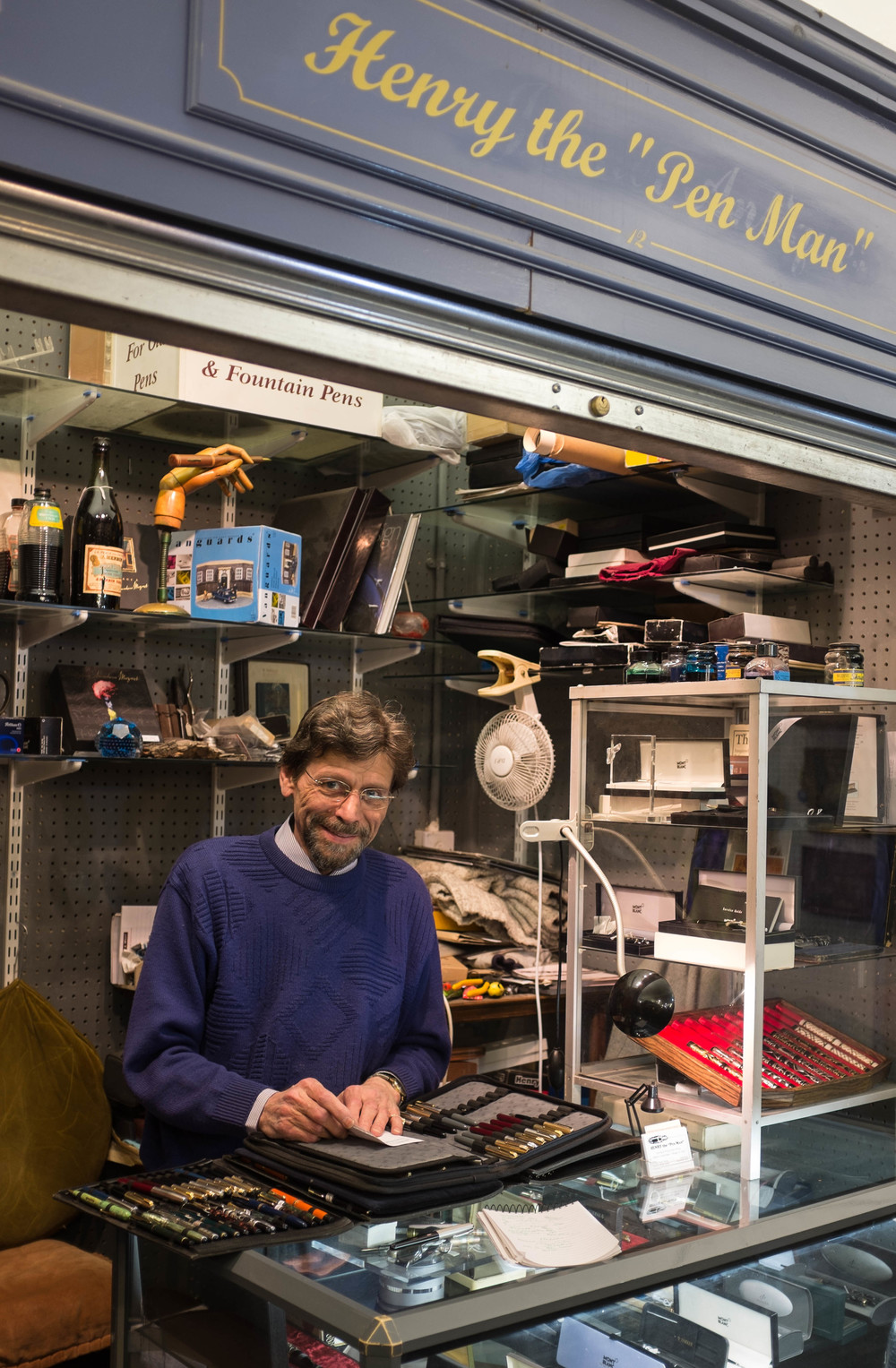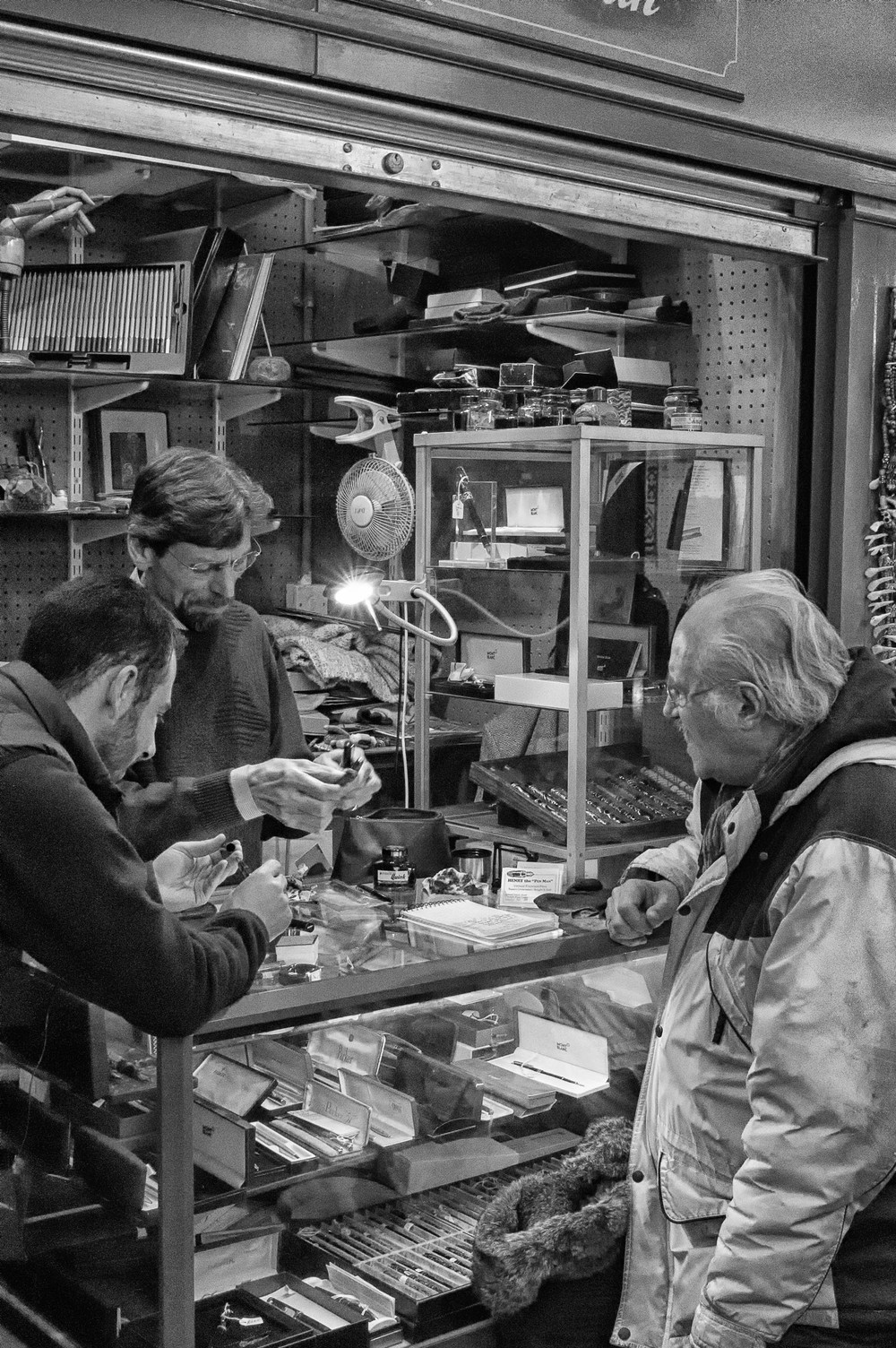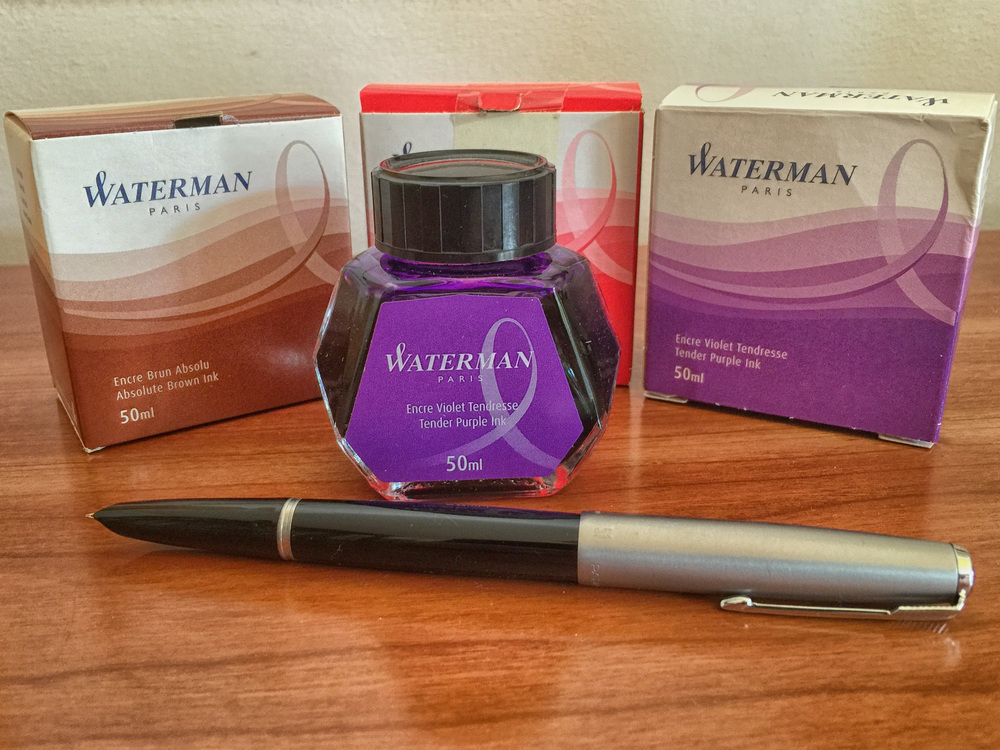
Just as my Apple Watch has banished the rather lovely IWC Pilot Chronograph from my wrist, the keyboard all but killed off my love of fine writing instruments. In the old days I kept handwritten journals, wrote letters in long-hand, filled dozens of notebooks, wrote cheques, and kept my accounts all in the italic hand I perfected during my school days. I had—and still have, for that matter—a love of fountain pens.
Yet all has not been lost. In the past couple of years I have been making fresh efforts to keep my handwriting up to speed. There’s no doubt that if you stop writing by hand for lengthy periods you lose the fluency and flourish that hallmarks a good hand. Instead, writing can become jerky and uneven, simply for want of practice.

The main architect of my new-found ability with fountain pens is the long-ignored Parker 51. I’ve written several times about the iconic (use of the dumbed-down adjective being fully justified in this instance) Parker 51. When I was young it was my greatest wish to own one. It looked so modern with its seductively hooded nib and simple, flowing lines that I imagined it was something completely revolutionary. I decided it must have been invented in 1951 although I later learned that it had appeared before the war on the 51st anniversary of the founding of the Parker Pen Company. It seems inconceivable that such a modern-looking device could have had its roots in the 1930s.
Parkerless decades
Fountain pens have come and gone since I bought my first Parker 51 (for six pounds six shillings at the age of 17). I’ve had Montblancs, Pelikans and a plethora of similar instruments. Somewhere along the way, though, I lost touch with the 51 and several Parkerless decades ensued. But I never lost my rose-tinted memories of writing with the smooth, stiff nib that characterises the 51. Many times I regretted losing my own pen. In many ways using a 51 is similar to writing with a ballpoint pen, quite unlike the feeling you get with most other fountain pens. For some reason, despite nagging nostalgia, I never got round to replacing my the Parker of my teenage years.
Then, last year, I discovered a plentiful supply of used Parkers at an intriguing stall in London’s Portobello Market operated by Henry Simpole, otherwise known as Henry the Penman. Here is an Aladdin’s cave of pens, not just Parkers but every conceivable fountain pen. Henry even manufactures his own exquisitely inlaid masterpieces for the well heeled.

For Parker 51s, though, Henry is unsurpassed and he is certainly cheaper than the posher vintage pen emporia in Mayfair. I ended up with a range of Parkers for every occasion.
Violet Tendresse
Three fine examples sit before me on my desk as I type this article: A black-barrelled pen with a fine, smooth nib which is filled with Waterman’s Violet Tendresse, Tender Purple; a Teal Blue pen with a broad, rather squishy nib, offering a rather overpowering gush of Pelikan’s blue black ink; and, in a touch of pure 1960s luxury, a burgundy-barrelled pen with gold-plated cap producing a muted flow of Waterman’s Rouge Audace. These three are my normal stock in trade and I use them much as I would a trio of coloured bullpoints.
I practice every day, writing in a Moleskine or Rhodia notebook. It is nothing particularly important — all that vital stuff I still prefer to keep on the computer — but there is an endless pleasure to be had from scribbling away, just as I used to do for a living, rather than simply as a secret pleasure.
Pen of choice
Looking back, I now see clearly that the Parker 51 is the Leica M3 of the pen world. It was the mainstream pen of choice throughout the 1950s, 60s and 70s. There are countless examples around for between £50 and £100, and all write just as they did when new. If you have used one in the past you will know what I mean; writing with the Parker 51 is a unique experience — neither typical fountain pen nor ballpen; it is something in between and quite bewitching.
If you love pens and some of the finer things in life, including Swiss watches, I can highly recommend subscribing to Ian Skellern and Elizabeth Doerr’s Swiss-based blog, Quill & Pad. Start with this article by Martin Green: My Quest for the Ultimate Fountain Pen and learn some more about the Parker 51.
_______________
- Subscribe to Macfilos for free updates on articles as they are published. Read more here
- Want to make a comment on this article but having problems? Please read this

I don’t own a Lamy pen, but use their ink in a fountain pen. I love that it is somewhat water-soluble which gives me a shadow effect with a brush of water. It is probably more of a drawing ink than writing ink for that reason.
As for the pens, my father gave me a Shaeffer and I received a Duke in a prize draw. Both are good. The Duke writes well and smooth, but often needs reprimed.
My own experience with Parker is somewhat mixed… My wife had a 21 when she arrived; I´ve never used it, neither has she since she left school.
Myself, I do own some 10 different pens, among them a “new edition” Duofold: a massive pen with a wonderful 18 K medium nib. Sadly, the ink flow has proven quite unreliable: even when daily used and properly capped, it suddenly stops writing, and one has to pump a drop of ink out (which then has to be wiped off). At other times, it overflows instead. So, I never use it.
About 2 years ago, after a lot of hesitation, I plunked the money down for a brand new Lamy 2000. Like the 21 (and 51), it has a stub nib, quite modern design without frills – and from the very beginning, this one became MY PEN! I haven´t even filled any of the others since, I have to admit; should sell them to better homes, but they don´t take up a lot of room compared to all the cameras in my cupboard, so I just don´t get around to it….
Even the cheap Lamys are excellent pens and you have to ask why spend more. I suppose it’s the difference between a perfectly serviceable and totally accurate digital watch and an expensive Swiss watch that needs winding and doesn’t keep such good time.
Sure; I do own a cheap Safari (which I even got a decent gold nib for), but the 2000 is on another level altogether. The Safari is quite useful for travel since it accepts cartridges, but the 2000 holds a LOT of ink; lasts a couple of weeks normally.
Another excellent German make is Kaweco who do a neat little pen where the cap attaches to the main barrel to create a full-size pen. I’ve written about this if you do a search here.
My father passed a Parker Premier silver/gold to me when I went up to Cambridge as an architecture student; I used it to sketch and write throughout my studies, and bought a second one when I came to the US. It has since been joined by the silver version of the pencil, and a couple of Parker 51s from my father-in-law. The most valuable of all, however, is a gift from the wife of a deceased French philosopher, a close friend and a great aesthetician, his favorite 51, this time green. I use them all, from time to time with pleasure – especially as flexible drawing instruments and for writing personal notes to friends.
I don’t think any other pen writes in the same unusual but captivating way. No large floppy nibs. In the days before the balloon became the norm, the 51 was the nearest competitor.
Your article about replacing your Parker 51 chimed with me and like you I had always believed that the name indicated the date of its introduction.
One rather swanky lad at school sported a Parker 51 which I lusted after but having lost pens at an alarming rate I had little chance of satisfaction. However just after I passed my 13th birthday I had to go into hospital for a very lengthy stay and my father bought me a beautiful teal green silver capped example to cheer me up. My mother protested that it like the others would be lost within weeks.
However that original one sits on my desk in front of me today and is often used as it has been for the last 70 years. A couple of replacement nibs (for breadth of nib rather than wear) but otherwise as it was and still in excellent condition.
At one time as a leaving gift workmates gave me an inscribed gold Parker 51 with matching ballpoint and pencil – very nice and much appreciated but they are tucked away in a drawer unable to quite match, for me, the appeal of that old green 51.
My biggest pen regret is that the large blue marble Duofold that my father used every day of his life was lost when he died when I was away at university and I did not get to inherit that beauty which might have trumped even the 51 – for sentimental reasons if for no others.
I really like my Parker pen, the quality of the design is remarkable. I Have always used a fountain Pen it makes it a pleasure to write with especially being in the profession I am in. I have a Parker 51 at home which has a lot of sentimental value to me, such a brilliant pen for its time which revolutionized the Pen Industry.
I recently bought a Parker Pen set online for my husband, for anyone interested they are on offer here: http://www.executivepensdirect.com/parker-pen-sets
I did not buy it from Henry the Penman, although, if I could have, I would have: he sounds like a safe bet for all finer writing needs. I stayed local and purchased from a USA based person who specializes in the Parker 51. I have not received the pen and pencil set yet. However, suffering from occasional bouts of impulsivity- especially when I sense ancient and durable quality- I purchased a 1945 Vacumatic with fine nib and gold filled cap. That pen is in my hands, and, it is spectacular. It is black and gold and looks, feels, and writes spectacularly. Again, thanks……Maybe I will write you a letter about it. 🙂
Hi Wayne, Yes, by all means let us have your views and perhaps a picture. Sounds interesting.
Well, THANKS! I like fountain pens, and have been using a fairly new Cross pen; but it spreads ink like a paint brush. I couldn’t resist. my Parker 51 (extra fine nib) pen and pencil set is on its way.
Hi Wayne, I’m glad I prompted you into ordering a Parker 51. Did you get it from Henry the Penman? I don’t have an extra fine nib so am jealous.
What a stream of memories you are bringing back to me! When I started school with the Christian Brothers we had to have a nib pen which looked like a pencil with a nib attached. There was ink in the ink wells but, after this ink was used by boys for various nefarious purposes, including ink fights, the ink was withdrawn and we had to bring our own. One character in my class used to eat wasps (in season, of course) dipped in ink. I cannot recall his favourite colour or flavour.
Gradually, we graduated to fountain pens. My father provided us with Osmiroid 65 pens which were serviceable, but not near as attractive as the Parker 51s which were owned by boys with wealthy parents. We used to watch them squeeze the ink into the pen with some jealousy. The Osmiroid had a little lever on the side which you could use to pump in ink like a pump for a car tyre. For many years I used a fountain pen at work, particularly in my civil service days, but I stopped using one before I entered the private sector. I have had a few Parker pens, but I cannot recall if any of them was a 51. I must do some searching around the house to see what I still have. My last good pen was a Watermans ball point which my eldest daughter gave to me as a present some years ago. It has a lovely ‘marbled’ brown finish and a gold clip and trimmings. I always found that I wrote better with a ‘good pen’. I agree that handwriting gets worse when you don’t use it or practice as you do. In my case my typing is pretty lousy as well. One fingered with many mistakes, as I did not learn before I was nearly 50.
Some of the finest hand made pens come from Japan. I’d be afraid to start looking at them as I might get on another ‘slippery slope’ as I did with my Leica collection. The comparison with the Leica M3 is probably most valid.
William